LCD-screen
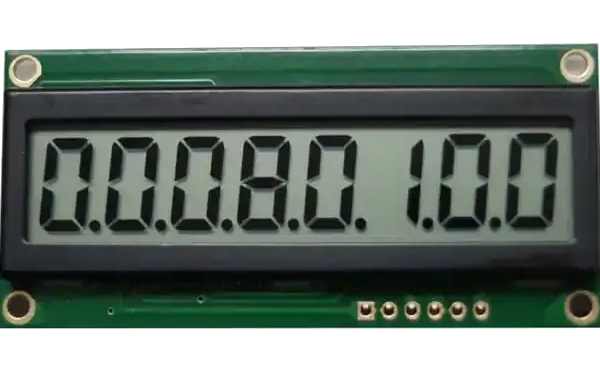
Liquid crystal displays are widely used in electronics to display text, numeric, and graphic information. Even though color TFT displays are the most common type of liquid crystal display, we are considering more basic displays with a passive matrix. These displays are used in calculators, electronic watches, payment terminals, and other everyday devices.
In liquid crystal displays, the image is formed by changing the color of the subpixel, which is made of liquid crystals. The liquid crystals of the corresponding pixel change their properties under the influence of electric current, resulting in a dark or light area and forming a monochrome image from pixels that are fairly large (from mm to tenths of mm). However, these subpixel sizes are not sufficient to produce photographic quality images like those on the screens of monitors and mobile phones. But for displaying text information and simple icons, this is more than enough.
One of the main advantages of liquid crystal displays is their low cost, simplicity, and low power consumption. Without active backlighting, the energy consumption of such displays is minimal (tens or even hundreds of times less than conventional color displays of the same size). This allows battery-powered devices to have autonomy measured in months or even years. For instance, electronic watches or calculators can operate on a single battery for years. Before the widespread introduction of color TFT and LED displays, mobile phones could last from several days to several weeks on a single charge, instead of one or two days now.
However, due to their simplicity, liquid crystal displays have limitations in how they display information. They are mostly used to display text or numeric information. The simplest form used for numerical information is seven-segment indicators, which can display numbers and a limited number of letters. In more complex displays, each character is formed using a rectangular matrix of square pixels (5x8 in the most common displays), allowing the display of any letter and punctuation mark. Such matrices are grouped into rows and columns to display familiar lines of text. For example, type 1602 displays have two lines of 16 characters, enough to display simple information such as the result of a calculation for a calculator or the amount to pay at a terminal in a store.
More advanced display models have one large field of pixels and are not divided into separate matrices for each character. The pixels are quite large and noticeable to the naked eye, but such a screen is capable of displaying text information and simple graphics.
Liquid crystal displays are capable of displaying static and dynamic information. Depending on the display technology, a pixel can change its brightness at a speed of 5 to 20 times per second. This allows the creation of a running line from long text, a blinking cursor, and other animations that simplify user interaction.
To connect a standard LCD display to the controller, seven pins are typically used (five for data transmission and two for power). If the display has a backlight, two additional pins are required. Many displays have their own controller, which enables the control of all functions using standard protocols (SPI, i2c, etc.). These displays are slightly more expensive, but simplify the connection and save pins on the controller when many peripheral devices are connected in addition to the display.
Application projects that require low energy consumption and low component costs can benefit from using liquid crystal displays. These displays enable the display of familiar text information even in cases where the computing capabilities of the system are limited and full-fledged displays cannot be used.
Electrical load shedding system with temperature sensor
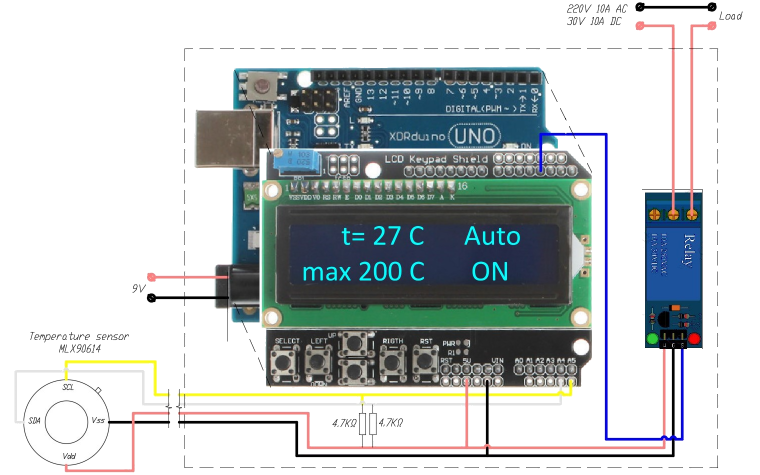
The system is designed for emergency shutdown of electrical load based on the readings of a wireless infrared temperature sensor
The MLX90614 infrared non-contact thermometer measures the temperature of an object and transmits the data to the controller, which turns on or off the relay that controls the load
Score counter for board game with LCD screen
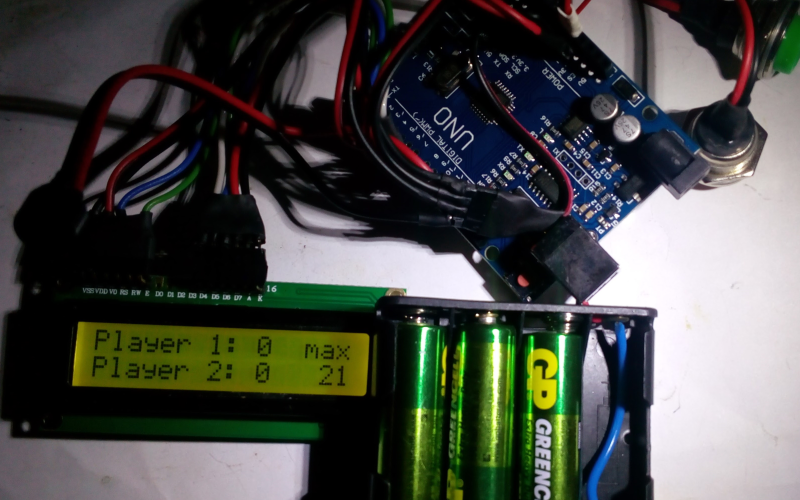
Each player has a button to add score points or current progress. After adding a score point a beep is played (different for different players) and the point is displayed on the screen as well as the second player's points and the final goal. When the final result is reached, a sound signal is played and messages about the winning of the corresponding player are shown. The system has several modes for different games
Briefcase with riddles to use in escape room amusement
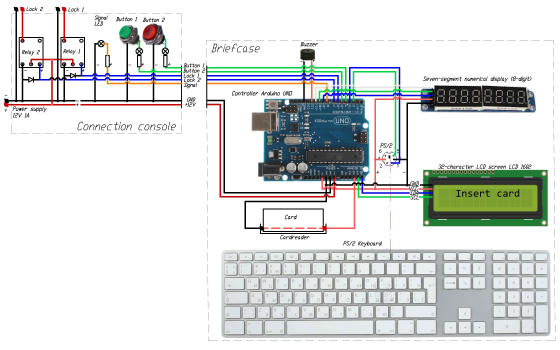
According to the plot of the game, the briefcase is part of the puzzle and must be used in a chain of tasks to open the exit door. The briefcase can be connected to a stationary connection console from which the door lock is unlocked. All actions are accompanied by messages on a numerical display, character LCD screen, and sound signals from a buzzer
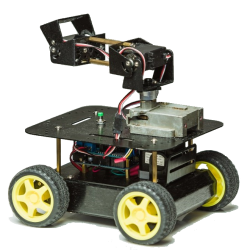
 Books
Books Technology
Technology Electronics
Electronics DC motors
DC motors Raspberry Pi Controllers
Raspberry Pi Controllers Relay
Relay Temperature sensors
Temperature sensors Analog sensors
Analog sensors Digital sensors
Digital sensors ADC
ADC Bluetooth
Bluetooth Radio communication 2.4 GHz
Radio communication 2.4 GHz LCD-screen
LCD-screen All tags
All tags Programming
Programming Weaponry
Weaponry Projects
Projects